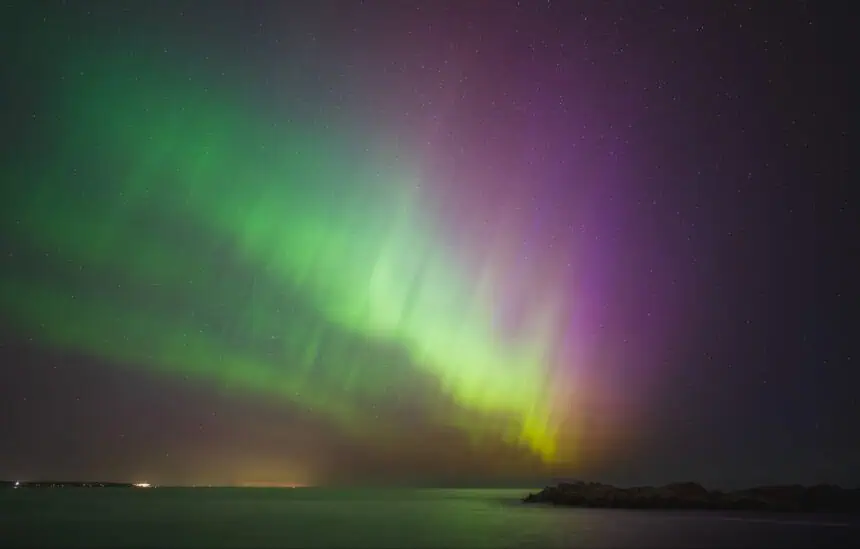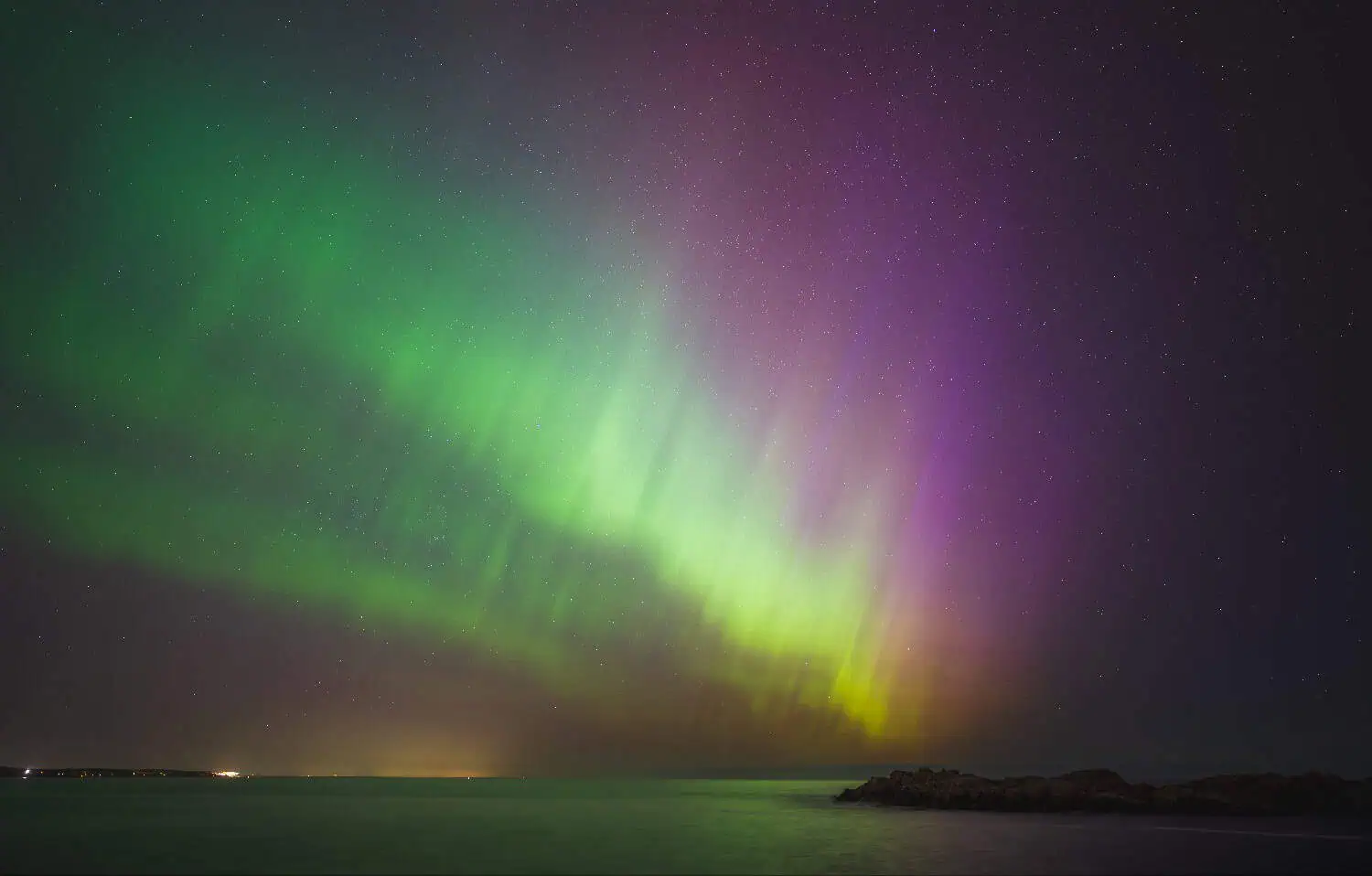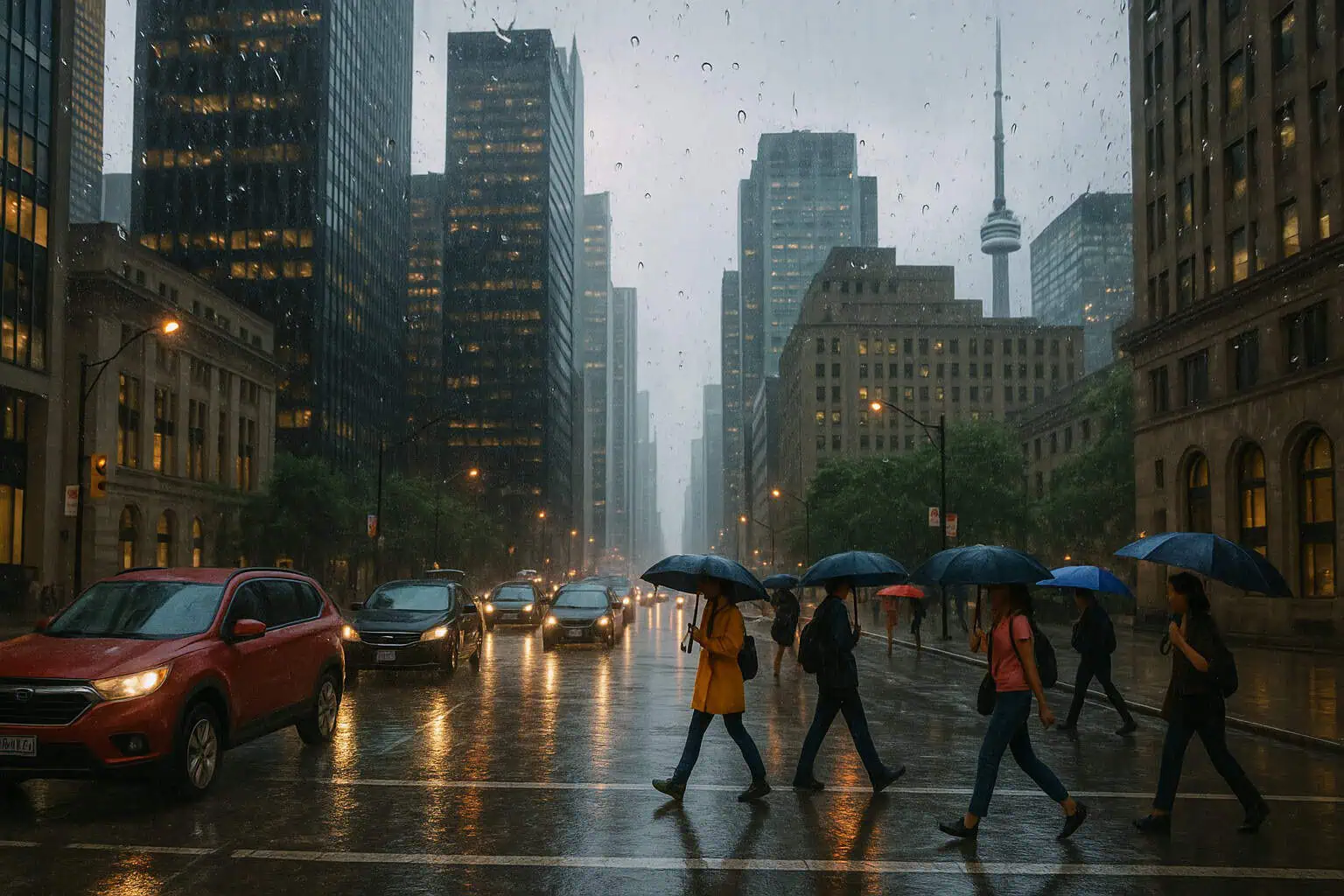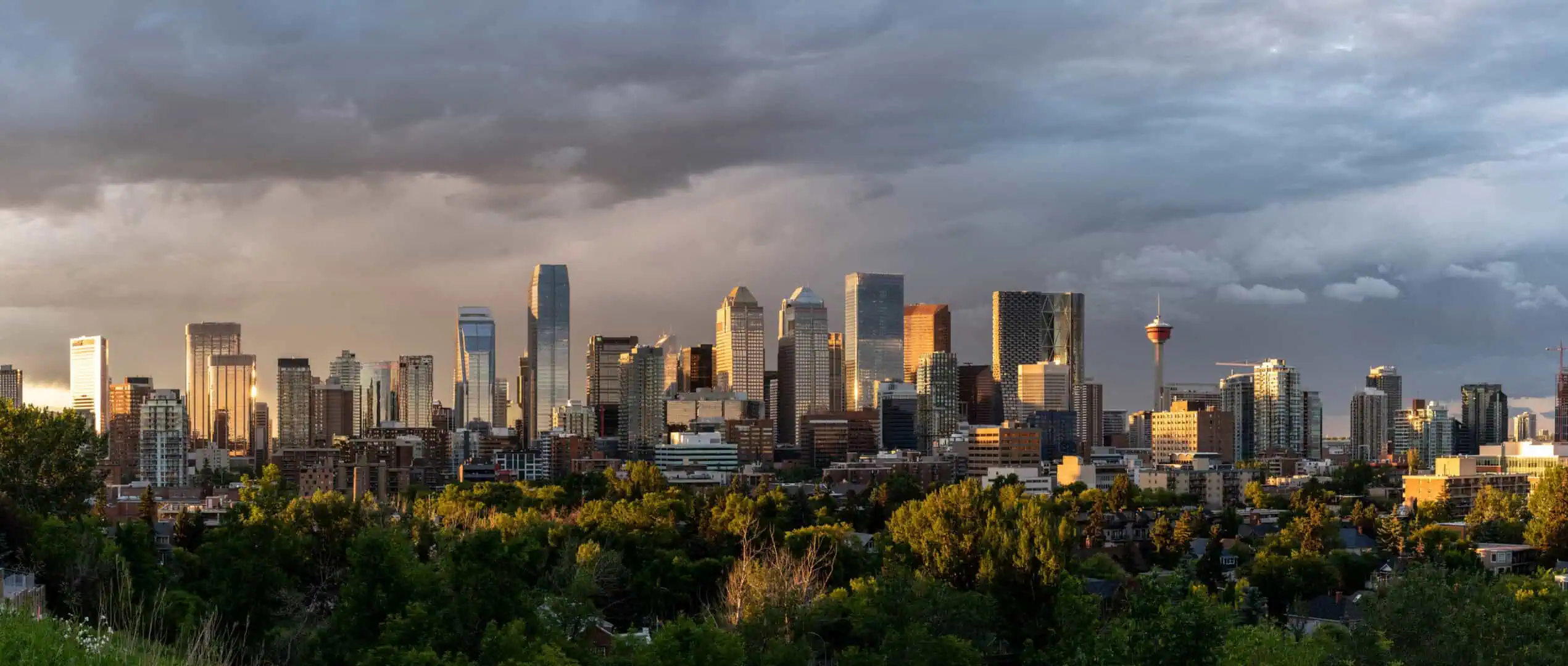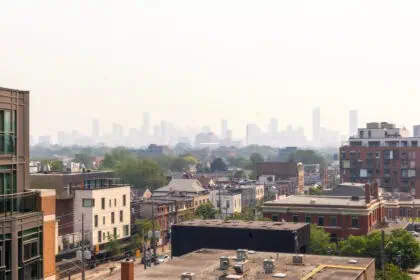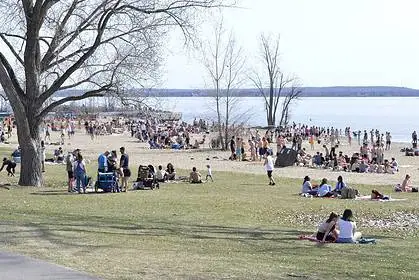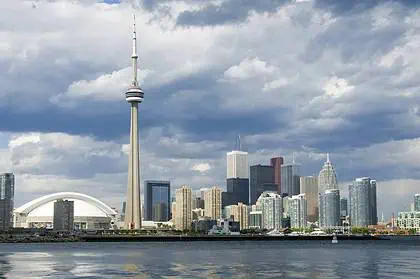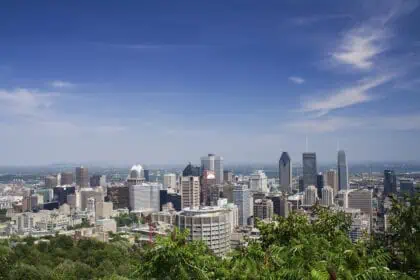Monday night: skies glowing with geomagnetic storms
According to the National Oceanic and Atmospheric Administration (NOAA), Monday night, June 16, could offer dazzling views of the aurora borealis across several regions in the northern United States. The phenomenon is being triggered by minor geomagnetic storms caused by high-speed solar winds flowing from a cooler and less dense coronal hole on the Sun’s surface.
Elevated Kp index: auroras likely across 8 U.S. states
The Kp index, which measures geomagnetic storm intensity on a scale from 0 to 9, is expected to reach levels close to 5 — a threshold indicating the potential for auroras to extend farther south than usual. NOAA describes this level as “quite pleasing to look at” for viewers in the right locations.
The best chances to see the northern lights in the United States are in:
South Dakota, Wyoming, Iowa, New York, New Hampshire, Vermont, Maine, and parts of the Upper Midwest.
Peak visibility in Canada and Alaska
The most intense and consistent displays are expected across northern Canada and Alaska, where geomagnetic activity will be stronger and more sustained. Some areas in the northern tier of the continental U.S. could also be treated to faint or brief auroral glows, especially:
Northeastern Washington, northern Idaho, Montana, North Dakota, northern Wisconsin, and the Upper Peninsula of Michigan.
Ideal time and best viewing conditions
The optimal time window to catch the aurora is between 10:00 p.m. and 2:00 a.m. local time. NOAA recommends heading to a high-altitude location, far from artificial light sources for the best visibility.
For photography, experts cited by National Geographic suggest using a wide-angle lens, an aperture of f/4 or lower, and setting the focus to infinity. If you’re using a smartphone, enable night mode and stabilize your device with a tripod.
Solar activity is peaking: ideal aurora conditions through 2026
The surface of the Sun entered a period of heightened activity in October 2024, and this solar maximum is expected to last into early 2026, according to both NOAA and NASA. This phase features increased solar events like solar flares and coronal mass ejections, which fuel auroral activity. As electrons from these events reach Earth and interact with oxygen and nitrogen molecules in the atmosphere, they release energy as visible light — producing the aurora.
Let me know if you’d like a localized aurora forecast for any Canadian province or territory tonight.

